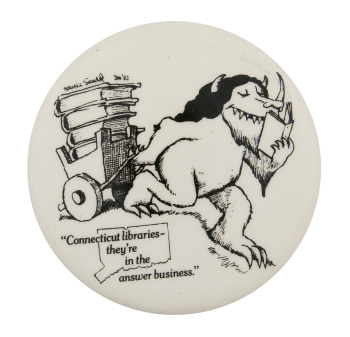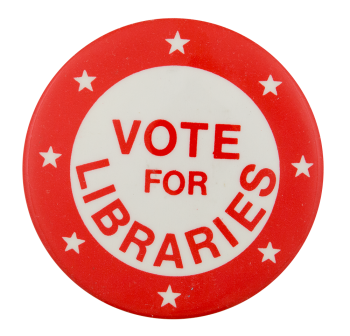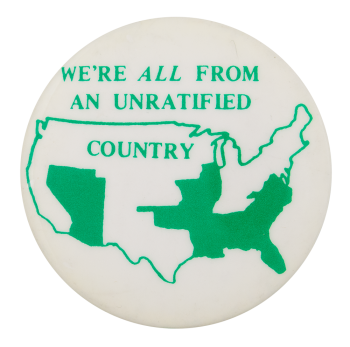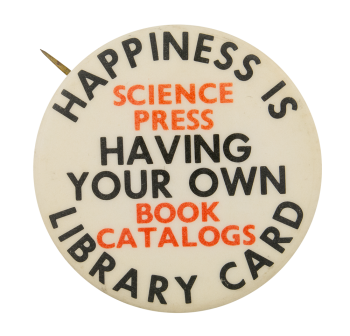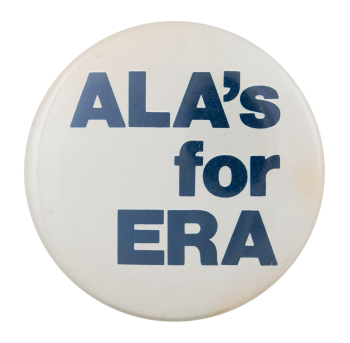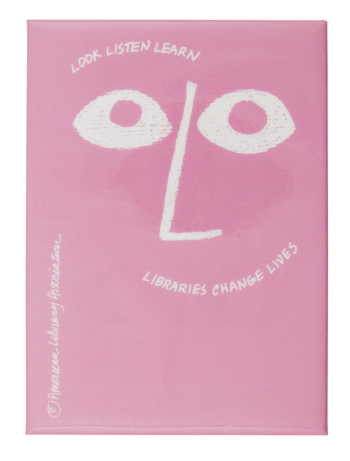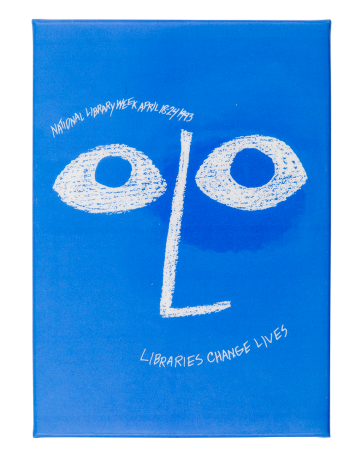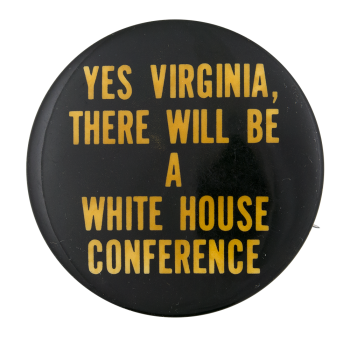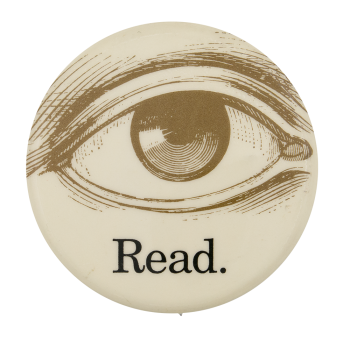Connecticut Libraries
| Category | |
|---|---|
| Additional Images | |
| Sub Categories | |
| Text on Button | "Connecticut libraries - they're in the answer business." |
| Image Description | Illustration of a Maurice Sendak creature pulling a wagon with books in it while reading a book over an illustration of the stat of Connecticut and with black text on a white background |
| Back Style | |
| The Shape | |
| The Size | |
| Year / Decade Made | |
| Additional Information | “Connecticut libraries – they’re in the answer business” was a public relations campaign to promote public libraries as well as the services provided by the Connecticut Library Association. The campaign ran from 1981 – 1982 and featured illustrations by children’s author and illustrator, Maurice Sendak (1928 – 2012), on various promotional materials such as buttons, bookmarks, and bags. The illustrations were based on characters Sendak had created for his book, Where the Wild Things Are (1963). |
| Catalog ID | CL0349 |

